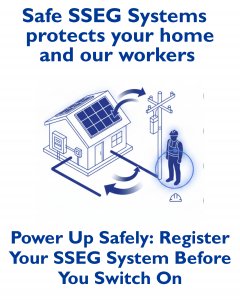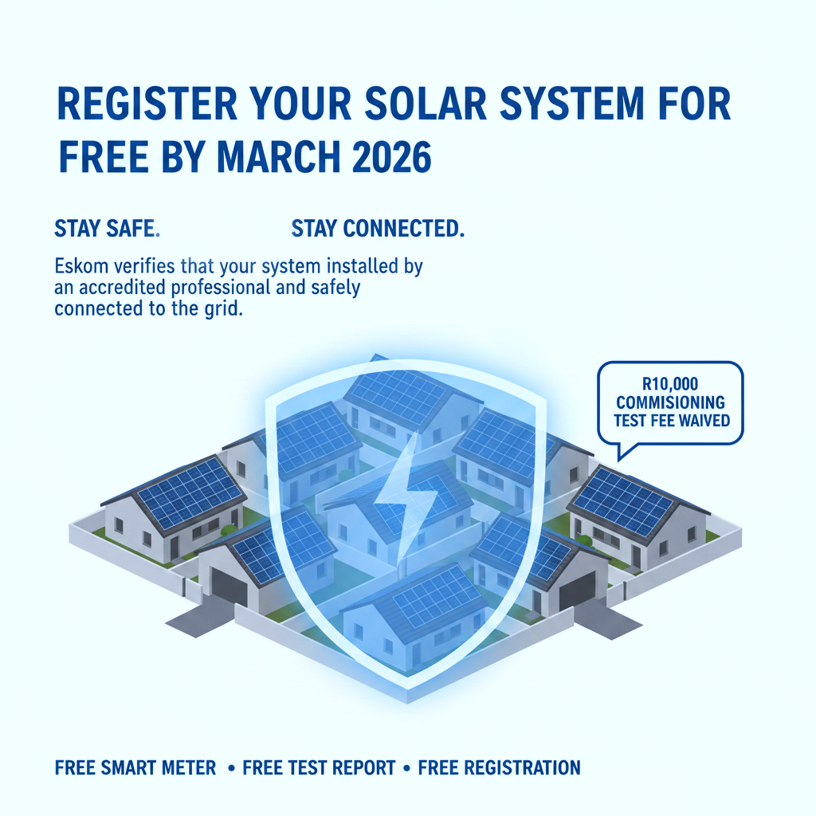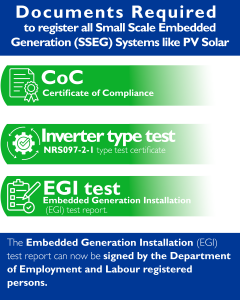
Safe Solar starts here… Eskom is committed to protecting you, your home, and the electricity network. Registering your Small Scale Embedded Generation system like PV solar adds an extra layer of safety and ensures everything is installed and tested by accredited professionals.
Why registration matters?
We care about your safety — and the safety of everyone working on the network. Small Scale Embedded Generation systems, like PV Solar systems, that operate in parallel with the grid can cause risks if not properly installed and tested. Registering helps Eskom confirm that your system is safe, compliant, and won’t put your home or our workers in danger.
Potential risks of unregistered systems:
They can back-feed electricity into lines during faults.
They may endanger electrical workers doing maintenance.
They can damage household appliances and Eskom equipment.
They may disturb voltage and reduce power quality for your neighbourhood.

How to register:
Step 1: Submit your details Online
Step 2: Upload your compliance documents
Step 3: Receive Approval and Smart Meter Installation
We schedule your meter installation at no cost to you. Start my free registration
Alternative you can call Eskom contact centre on 08600 37566 or email the relevant province
Kindly ensure that your email has the relevant email subject heading i.e. #SSEG Application
[email protected]
[email protected]
[email protected]
[email protected]
[email protected]
[email protected]
[email protected]
[email protected]
[email protected]


Who needs to register:
All households and small businesses with systems below 100kVA must register with Eskom, even if they do not export electricity.
Customers who are fully off-grid and not connected to Eskom’s network are exempt, provided they can prove full independence from Eskom’s supply.
o Eskom Registration only – up until a 100kVA
o Eskom and NERSA registration -above 100kVA to 1 MW
Compliance certificate report form
SSEG Pull-up banner
SSEG Generation application factsheet
SSEG wall banner
Embedded generation Peddie Mall case study
Management of certification of compliance for electrical installations _ 240-170000465
SSEG Brochure
Yes. All systems operating in parallel with the grid must be registered — including zero-export designs.
It verifies that your inverter behaves safely with the grid and protects both you and workers.
A system may be disconnected if it is unsafe, non-compliant, or unregistered — as required by national law.
It supports safe solar operation and prevents billing errors.
Registration is free until March 2026 for urban residential customers.
Eskom Contact Centre: 08600 37566
Useful links
Find Qualified Electrician in South Africa https://electrician.org.za/
